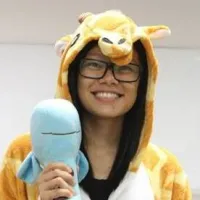
Photo by Hush Naidoo Jade Photography on Unsplash
Science Speaks Love a Little Differently
Crises bring out the best and the worst in people. The COVID-19 pandemic is no different. Through this trying time, I have seen the ugliness of human selfishness, but also the beauty of human love.
Love expresses itself in many forms.
Romantic love as the longing of lovers across locked borders, relying on zoom calls to keep one another strong. Familial love expressed as the small things of keeping each other safe through the constant reminders to mask up and cooking together.
More evidently, I admired the self-sacrificial love of our brave front liners handling the virus in the face.
What about scientific love? Well, that was awkward for quite a while, until I discovered what it truly meant.
During the initial parts of the pandemic, well-meaning church friends would message me saying they were praying for me to find the vaccine soon. I had to sheepishly tell them that I was studying something else instead, and that my work was affected just like everyone else.
Rather than doing COVID research, I was at home writing my qualifying exam proposal on the functional consequences of gut microbial colonization on host mediated drug clearance; a topic far removed from the ongoing pandemic.
I felt a sense of dissociation. What in the world was I doing, working on a complex research question no one else understood?
Strangely enough, shunning these vaccine questions led me to an answer with Hungarian Biochemist Katalin Karikó’s story.
Karikó is well known today as the scientist behind the ground-breaking mRNA vaccine from Pfizer-BioNTech.
Back in 1995 though, Karikó faced the lowest point in her career. On paper, her research into mRNA as a new therapeutic made sense. mRNA is the language of cells, consisting of four letters, A, U, C and G. Various combination of these letters provide instructions to the life giving processes of making proteins.
Learning to speak the same language as the cells would thus give us the ability to create any protein we desire, such as antigens to vaccinate against infection, or therapeutic enzymes to cure disease.
mRNA would utilize the cell’s machinery for a short period after giving its instruction, then degrade after, leaving the cell’s genetic information intact.
The problem was, pure mRNA was extremely unstable and would degrade almost immediately upon contact with any body fluids.
Furthermore, the human body did not like foreign instructions present outside its cells and would conduct chemical warfare on it through severe inflammatory responses. These scientific roadblocks prevented many funding agencies, drug companies and even Karikó’s own colleagues from believing in her work.
During this time, Karikó went from her position of being on track to a full professorship back to the lowly rungs of scientific academia. It was reported that her salary became lower than even that of her technicians.
Thankfully, in collaboration with longtime collaborator Drew Weissman, they found that by swopping out the letter U to, a modified form, they could avoid the body’s natural chemical warfare on mRNA, opening up the world to mRNA therapies.
Kariko’s story inspires me as one of perseverance. The doggedness to hang on in hope of a scientific discovery that would better humanity.
Her story did not start in 2020.
It began in 1990 as a black box involving years of trial and error, rejections and humiliation before the success of the COVID-19 vaccine. We often think of love in immediate, tangible ways we can see and understand.
Scientific love is a little different, not being immediately viable, often involving years of hard work and tears behind the scenes away from the public eye.
As I stare at my own results in frustration that they once again don’t make sense, I am reminded of a similar hope that I hold on to, that my work while seemingly far from reality now, might one day benefit humanity.
As a Greek Proverb puts it, “The true meaning of life is to plant trees, under whose shade you do not expect to sit.”
I too am planting trees with each step of my research, becoming part of a bigger picture that will be something greater in time to come.



